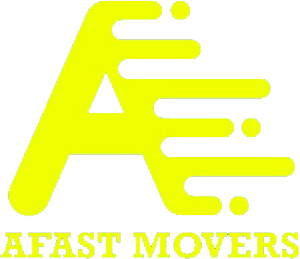Business Relocation Guide

Regardless of the size of your business, once the decision to relocate has been made, a systematic plan must be setup to accomplish that goal with minimum disruption to daily business and productivity. Failure to allow adequate time for this process can result in confusion, conflict, and incur additional cost.
The following steps offer guidance for a successful move:
FIRST THINGS FIRST
Designate a project leader and task force
Your task force can consist of two to three individuals (no more than three). The team should have regular meetings with a designated coordinator to oversee the move plan and delegate responsibilities. The earlier everyone is involved, including professional consultants (i.e. leasing agents, interior designers, space planner, etc.) the greater the chance that the overall plans will meet with success. Relieve the project leader of as many of his daily responsibilities as possible so he can devote as much time as possible to the move. This is a major responsibility and there is a lot of decisions needing someone’s full attention.
Meeting with all key personnel within the organization
Discuss each department’s relocation concerns. These should be able to cover from high tech machineries to toilet rolls.
Select the right mover
Contact a mover and ask them to assess the size of your move based on the volume equipment and office items with specialised requirements. Carefully review the tender and the proposal before signing up the contract. Should you have any question do not hesitate to ask.

THE COUNTDOWN
6 weeks before the move
- Meet with Move Consultant to finalize the move schedule.
- To form Moving Coordinator teams from each department to assist in delegation and implementation.
- Finalize floor plan for new office and provide label and numeric numbering system to your mover.
- Advise leasing agents and building superintendents of relocation dates and make sure access is available.
- To form technical teams for disconnection and reconnection of High-Tech Machineries, Computer equipment and Telephone system.
- Organize a detailed relocation timetable to minimise disruption to staff and identify special handling requirements.
- Take inventory of all “High-Value” items in your office and note any pre-existing damage. Declare all high-value items to your mover in writing.
- Contact your insurance agent to discuss coverage during your move.
- Meet with your MIS Department to discuss special needs for moving IT equipment.
4 weeks before the move
- Advise all employees of the necessary details of relocation including moving dates and times, stationery cut off and re-issuance dates, when cartons are arriving for packing and where and from whom they can be obtained, computer down and on times, plus any other relevant information.
- Arrange for a meeting between the department co-ordinator and the move consultant to issue packing and labeling guidelines. Advise the move consultant of support service and leasing companies who will be involved in relocation of specialised equipment.
- Issue an internal memo to all employees outlining moving instructions. Make sure all employees are advised to clearly mark all equipment, desk, filing cabinets, boxes and so forth according to the packing and labeling guidelines. Make access available to the new premises so staffs can visualize working areas when preparing furniture layout.
- For building located in areas where parking is prohibited, apply for special loading/unloading permits.
2 weeks before the move
- Forward a copy of each department’s furniture/equipment placement layout to mover’s representative. Confirm all remodeling and decoration activities at new premises are being carried according to schedule.
1 week before the move
- Hold a meeting with your department co-ordinators and mover’s representative so that any questions or problems raised by your personnel can be solved.
- Finalise and approve furniture/equipment placement layouts, numbers and type of boxes needed by each department.
- Appoint a small number of staff to be present on moving day.
- Reconfirm with leasing agents and building superintendents that lifts are available and access has been organised.
1 day before the move
- Place floor plans in relevant areas at new premises so that your relocation crew can locate each area quickly. Confirm all packing and labeling is completed and accurate.
- Remind all staffs not to pack fragile or breakable items in cartons. The moving crew will handle this.
- Provide your mover’s representative with your private phone number just in case of emergency.
Move
- The physical move has been successfully completed, but the relocation is not finished until your business is functioning as it was before. One important area that is often overlooked is the people priorities. Your personnel suddenly find themselves in unfamiliar surroundings and can become unsettled by this. Provide your staff with a complete copy of floor plans of the new premises as well as telephone extension lists. Make sure there are directional signages in place. In addition, provide them some information of nearby food stalls or restaurants. It helps staff to settle into their new environment quickly and get the company’s operation back to normal.
